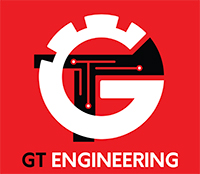Research projects
GT Engineering boasts a multi-year collaboration with important national and international research groups. We collaborated with the “Cosmic Rays” group of the National Institute of Nuclear Physics in Rome (INFN) for the construction of the mechanical part, the support structure and the screen of a solar neutron detector.
Also for the INFN we have carried out experiments such as “Babar” and “L3” for the production of RPC (Resistite Plate Chamber), after which we have dealt with the engineering and optimization of the production of the material itself, through the design and construction of specific machines and equipment that led us in just over 4 years to create about 30,000 square meters of RPC, used for the experiments of ATLAS, CMS, BABAR, ARGO, ALICE and OPERA on LHC Cern Geneva.
Projects
GT Engineering has participated in the following research projects:
ATLAS (LHC CERN of Geneva)
ATLAS is an experiment designed to observe phenomena involving heavy particles that have never been observed using current lower-energy accelerators and to shed light on new theories of particle physics beyond the Standard Model.
CMS (LHC CERN in Geneva)
CMS is an experiment designed to operate at the LHC hadron collider at CERN in Geneva. The main objective of the experiment is the search for the Higgs boson, a fundamental ingredient of the Standard model of electroweak unification.
ALICE (LHC CERN of Geneva)
ALICE, acronym for A Large Ion Collider Experiment at CERN LHC, is a project that aims to build a heavy ion detector that allows to examine the effects of interactions between heavy nuclei at the energies obtainable with the Large Hadron Collider (LHC).
ARGO YBJ laboratory in Tibet
ARGO-YBJ is an experiment dedicated to the observation of very high energy gamma rays (photons) generated by both galactic and extragalactic cosmic sources.
OPERA Gran Sasso Laboratories
The OPERA experiment began in 2006 when the first neutrino-mu, the “normal” neutrinos, were seen in the OPERA apparatus after a 730 km journey from CERN to Gran Sasso, covered at the speed of light in about 2, 4 milliseconds. Thus began the arduous, complicated search to find the elusive signal induced by a neutrino-tau.
How can we help you?
Call us or write us an email



